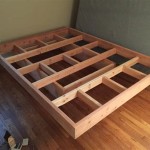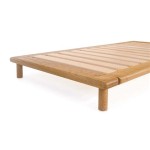Are Single and Double Beds the Same Length?
When it comes to selecting the perfect bed for your bedroom, understanding the dimensions and specific features is crucial. One common point of confusion arises when comparing single and double beds, particularly regarding their length. While they share a similar width, the length can vary significantly, influencing your comfort and sleep quality. This article aims to shed light on the key differences between single and double beds, focusing on their length dimensions, and the implications for your sleep experience.
Understanding Single Bed Dimensions
Single beds, also known as twin beds, are typically designed for one person. They are characterized by their relatively narrow width, usually measuring around 3 feet 6 inches (106.7 cm). The length of a single bed can vary depending on specific manufacturers and regional standards, but generally falls between 6 feet 3 inches (1.91 meters) and 6 feet 6 inches (1.98 meters).
This length is generally adequate for most individuals, offering enough space to stretch out comfortably and change positions during sleep. However, taller individuals may find single beds a bit cramped, particularly if they prefer to sleep on their side or curl up in a fetal position.
Double Bed Dimensions
Double beds, also referred to as full-size beds, are designed for two people, offering a wider sleeping surface than single beds. Their width typically measures around 4 feet 6 inches (137 cm), providing ample space for couples to sleep comfortably side by side.
The length of a double bed is generally the same as a single bed, ranging from 6 feet 3 inches (1.91 meters) to 6 feet 6 inches (1.98 meters). This means that, although wider, double beds do not offer a longer sleeping surface compared to single beds. Therefore, taller individuals may still find themselves needing additional length, despite the increased width of a double bed.
Choosing the Right Length: Considerations Beyond Dimensions
While the length of a single and double bed may be identical, several other factors influence sleep comfort beyond mere dimensions. These include:
1. Personal Preferences and Sleeping Habits:
Individuals with specific sleeping habits or preferences, such as side sleepers or individuals who tend to sprawl out, may find a longer bed more comfortable regardless of the bed type.
2. Height and Body Type:
Taller individuals may prefer a longer bed to accommodate their height and provide enough space to stretch out fully. Individuals with larger builds may also find a longer bed offers better sleep hygiene, reducing the risk of feeling confined or cramped.
3. Room Size and Layout:
The available space within your bedroom plays a significant role in bed selection. If you have limited space, a single bed might be more suitable, while a larger bedroom allows for the addition of a double bed or even a larger king-size bed.
4. Budget and Price Range:
Budget considerations can also influence bed selection. Single beds are typically more affordable than double beds, making them a more budget-friendly option. However, if comfort and personal preference are prioritized, a double bed may be a worthwhile investment, despite the higher cost.
In conclusion, while single and double beds often share the same length dimensions, other factors like personal preferences, body type, and room size contribute to the overall comfort and suitability of a bed. When choosing a bed, consider your individual needs and preferences to make an informed decision that maximizes your sleep quality and well-being.

Bed Sizes The And Mattress Size Guide

Bed Dimensions A Guide To The Perfect In Solara Home

Mattress Sizes In Singapore Origin

Single Vs Twin Bed Size What S The Difference

What Size Bed Is Right For My Child Cuckooland

Mattress Sizes And Bed Dimensions For Room Size Needs Eachnight

Ultimate Guide To Mattress Sizes In Singapore Sofzsleep

The Ultimate Mattress Size Chart And Bed Dimensions Guide Sleep Advisor

The Ultimate Guide To Bed Sizes What Katy Said

Bed Size
Related Posts







